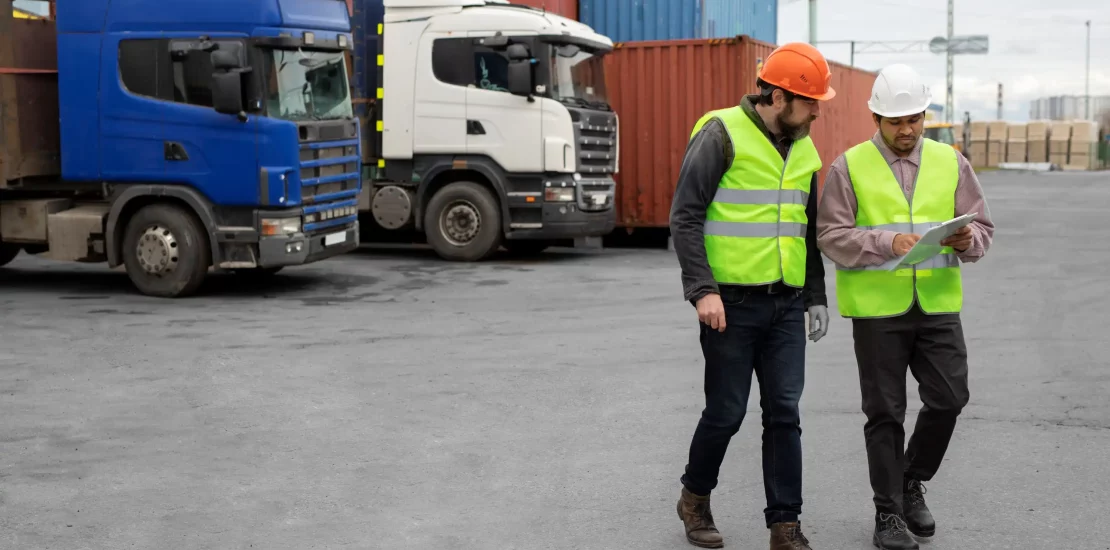GST Rate Changes for Transport of Goods – A Simplified Guide
- September 22, 2025
- Posted by: demanzo
- Category: Blog

The government has introduced updated GST rates for transportation of goods, covering container transport, multimodal logistics, renting of goods carriages, and courier/delivery services effective from today (22 september 2025). These changes impact how businesses in logistics, supply chain, and e-commerce manage Input Tax Credit (ITC) and GST compliance.
Since transport plays a huge role in logistics and supply chains, it’s important for businesses to know how these rates apply.
Here’s a quick and easy breakdown 👇
1. Transport by Railway Containers for anyone other than Indian Railways
| Condition | GST Rate |
| If ITC (Input Tax Credit) is not used | 2.5% |
| If ITC is used | 6% |
Illustration:
Suppose a logistics company transports goods via containers using railway:
- If they choose not to claim ITC, GST charged will be 2.5%.
- If they claim ITC on input costs, GST will rise to 6%.
So, a service worth ₹1,00,000 would attract either:
- ₹2,500 GST (without ITC)
- ₹6,000 GST (with ITC)
Businesses must evaluate cost vs. ITC benefit before deciding.
2. Multimodal Transportation (using 2+ modes of transport by a multimodal transporter)
| Condition | GST Rate |
| If no part of journey is by air & ITC (beyond limits) not claimed | 2.5% |
| If at least one leg involves air transport | 9% |
✅ Special ITC Rule Example:
- GTA service charged at 9% → You can claim ITC only up to 2.5%.
- Container transport operator charged at 2.5% → Full ITC allowed at 2.5%.
Illustration:
‘A’ hires a multimodal transporter ‘B’ to move goods from New Delhi to Gaya for ₹1,200. ‘B’ uses both road and rail (no air).
- ‘B’ hires a GTA ‘C’ for ₹600, who charges 9% GST = ₹54.
- ‘B’ hires Container Transport Operator ‘D’ for ₹400, who charges 2.5% GST = ₹10.
Now, as per rules, ITC allowed:
- On GTA (only up to 2.5% of 600) = ₹15, not full ₹54.
- On container transport = ₹10.
Thus, ‘B’ can claim ITC worth ₹25 only, not the full tax paid to vendors. The effective GST rate for customer billing remains 2.5%.
If air transport was involved in even one leg, GST would shoot up to 9%.
3. Renting of Goods Carriage (with fuel cost included)
| Condition | GST Rate |
| If ITC (except same line of business services) not taken | 2.5% |
| Otherwise | 9% |
Illustration:
A company rents a truck with fuel included in rent for ₹50,000.
- If they don’t claim ITC, GST = ₹1,250 (2.5%).
- If they claim ITC, GST = ₹4,500 (9%).
This means companies with high input costs may prefer ITC, but smaller firms may stick to 2.5% rate without ITC for cash flow efficiency.
4. Postal, Courier & Local Delivery Services (e-commerce deliveries, etc.)
| Service Type | GST Rate |
| Postal service | 9% |
| Courier service | 9% |
| Local delivery (e-commerce, last-mile delivery, etc.) | 9% |
Illustration:
For an e-commerce company paying courier charges of ₹10,000, the GST payable is ₹900.
Here, no concessional 2.5% rate applies – businesses must factor 9% GST into total logistics costs for postal, courier, or last-mile delivery.
Practical Takeaway for Businesses
- Small firms or those with limited ITC benefits may prefer lower GST rates (2.5%) without ITC.
- Large logistics and e-commerce players may find it beneficial to pay higher GST (6% or 9%) but claim ITC to offset costs.
- Multimodal transporters must carefully track ITC eligibility for each service provider to avoid excess credit claims.
Businesses should revisit their logistics contracts and check how ITC claims are structured to ensure they benefit from the lower GST rates where possible.
These rate updates aim to streamline GST compliance but require businesses to choose wisely between lower cash outflow vs. higher ITC claims.
